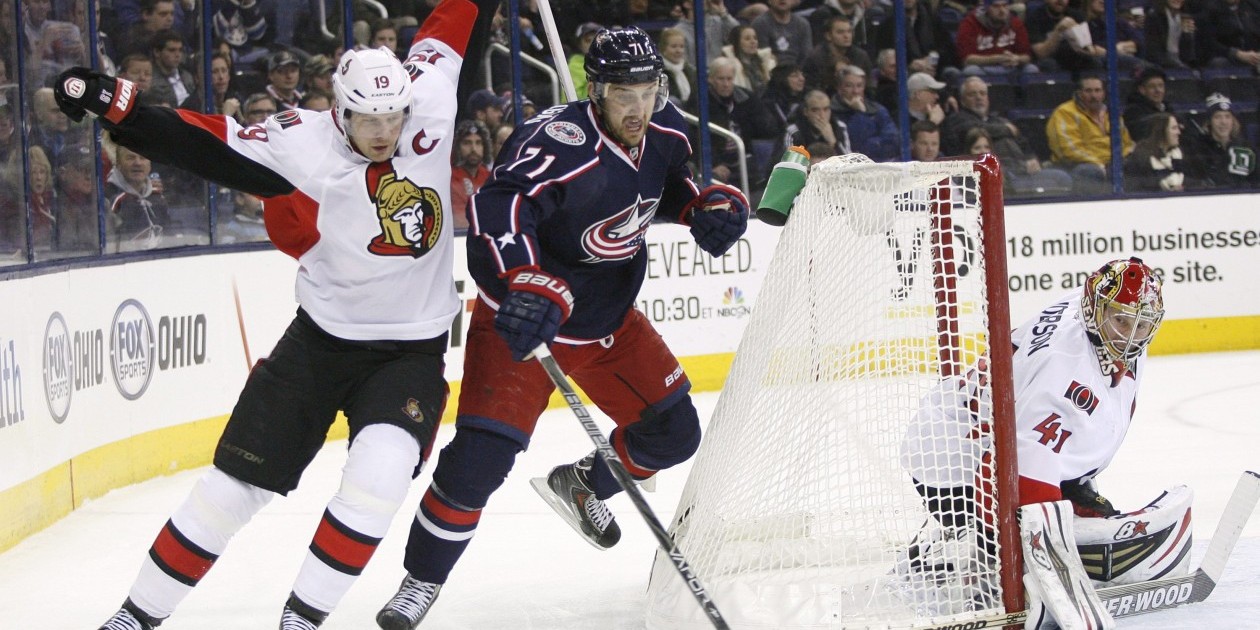“We are not currently considering putting advertising on NHL jerseys.”
Those were the words from NHL commissioner Gary Bettman on whether or not we will see sponsorship on players’ uniforms in years to come.
And the world rejoiced!
Tuesday’s announcement of the new NHL/NHLPA partnership with Adidas for NHL team jerseys and next year’s World Cup of Hockey uniforms came with a bit of trepidation for hockey traditionalists. Because with change, there is always the fear of more change.
Adidas, embroiled in a battle all over the planet with Under Armour, will put its imprint on hockey, taking over from its cousin, Reebok.
So, what does that mean? New construction of the sweater — more streamline perhaps. Changes that might mirror or amplify those that occurred when Reebok was anointed the task of modernizing the sweater less than 10 years ago. Stripes on shoulder patches or the bottom of the sweater? We’ll see.
Make no mistake, change is coming. We had already been warned that advertising of some sort (beyond the manufacturer) could possibly appear at next year’s international event. Most believe that will, in fact, be the case. It is suspected that a logo, small and simple, for some international corporation will appear on each of the eight World Cup of Hockey sweaters, visible more for the worldwide TV audience than the in-stadium crowd.
Will Adidas deal bring ads to NHL sweaters? “It would take a lot, a lot of money.” http://t.co/YuwBFNYp9g pic.twitter.com/gJaMldTJaB
— luke fox (@lukefoxjukebox) September 15, 2015
A test perhaps? Will hockey fans react differently to the sponsorship for their club teams in the next few years if they see it on Team Canada and Team USA in 2016? Maybe. One has to believe the World Cup will be a litmus test for such a business plan.
Advertising is not foreign to uniforms outside of the NHL. In Europe, in minor pro hockey, in junior hockey, additional sponsor logos are a fact of life. Ways of generating money for teams who don’t have multi-million dollar TV contracts or seven-figure gate receipts. But should it adorn the great and traditional sweaters of Montreal? Chicago? Rangers? Or any of the 30 teams of the NHL? Can you picture a Coke logo or a Molson logo above and to the left of Toronto’s eleven-point Leaf?
Hard to imagine.
But if I’m Comcast, the parent company of the Philadelphia Flyers, why wouldn’t I want to use the power of my sports team to push cable TV or internet service? If you were Darryl Katz, aren’t you asking if there can’t be a Rexall mark on the Oilers’ copper and blue?
At the same time, the commissioner is aware the Rangers would generate so much more than the small market Hurricanes. If a logo is to be added, it has to be done on a league-wide basis. Or does it mean that there will be two logos? (One league-wide, and the other team-specific?)
And what of selling in Canada and in the United States? More complexity, to be sure.
Hockey has become such big business. And the growing partnership with the players — or should it be the mutual desire to grow hockey-related revenue? — drives all involved in the sport to find that next stream of profits.
Believe it or not, there was a time hockey didn’t stop for TV commercials, or have sponsorship on the boards or on the ice. And now it’s up to the league, the teams and the players to justify taking that next step. Or not.
Advertising is an important part of the business of hockey. It has helped the growth of the game on every level. It is not evil. It is imperative.
But only to a point.
Through the clutter, the game has thrived. Sponsors have jumped on board, and all will claim the sponsorship and partnership a success. It truly is a great business story. And the growth of the game — from less than $400 million when Bettman took over, to $4 billion today — is nothing short of phenomenal for a sport many felt was destined to be regional in the United States.
With that in mind, how much money is enough to put something extra near the great Winged Wheel? Or the Flaming C? Or the Blue note? Perhaps, there just isn’t enough money, period.
Knowing when to say ‘when’ is so important at this juncture.
When.
This article originally appeared at Sportsnet.ca.











